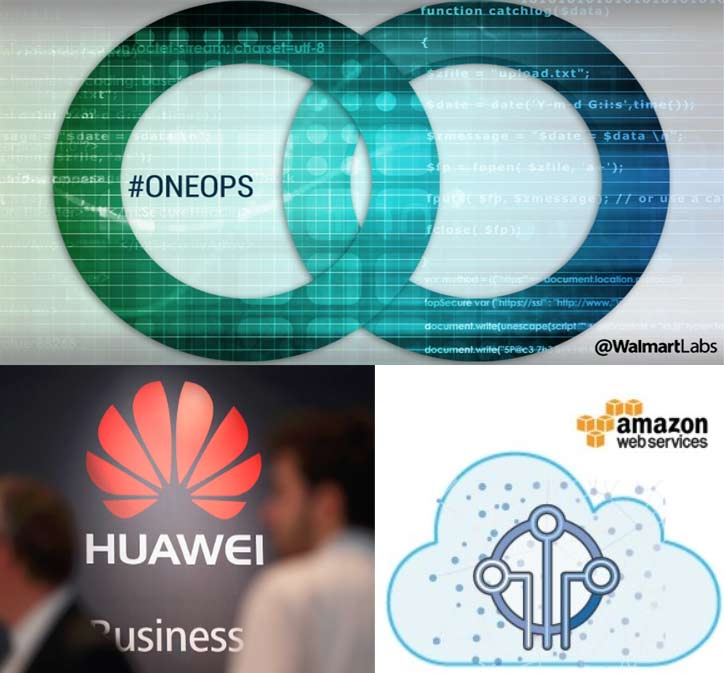
It was pretty obvious that the IoT market was going to grow in a very different way than my other other target market (digital signage) when super-heavyweights like Cisco and Google started making scores of acquisitions a few years ago, and teamed up with other tech-giants like Apple, IBM and many others to form industry organizations, standards bodies and technical expositions and conferences. However, even today there's plenty of room for even the biggest of big tech companies to get (more) involved with supporting connected devices.
As if to emphasize this idea, this week alone three of the biggest and most accomplished companies in the world made major announcements in the cloud computing and IoT spaces that ought to turn some heads. For starters, Walmart, the world's largest retailer, announced that they would be opening up their cloud management software stack to anyone interested in using it.
OneOps has four main benefits:
1) Cloud portability enables developers to seamlessly move applications, databases or entire cloud environments from one cloud provider to another. They’re able to “cloud shop” and take advantage of better technology or lower costs;
2) Continuous lifecycle management of the application means once a developer launches an application, OneOps continuously “auto-pilots” the app, scaling and repairing the app when unforeseen changes occur;
3) Faster innovation empowers engineers to spin up a new environment to host their app in a matter of minutes, without having to spend hours specifying the intricacies of a specific cloud environment. OneOps models all of that for them; and
4) Greater abstraction of cloud environments puts the control back into the hands of developers, instead of cloud providers, who often dictate the proprietary APIs, architecture, tools and technologies developers have to use.
Helping other firms interested in using cloud infrastructure to avoid vendor lock-in is a clear jab at Amazon (a major Walmart competitor, and the world's largest provider of cloud services, with many proprietary services on offer), but the point is valid: in our own recent attempts to move more WireSpring infrastructure into the cloud it has quickly become apparent that every vendor has their own lingo and processes for everything from storage allocation to billing, and simply trying to keep track of who is able to do what -- let alone give instructions to our engineers who will have to actually implement the plans -- is extremely challenging.
Of course, Amazon isn't resting on its laurels, and has announced a major new IoT initiative that utilizes AWS services (of course) that are custom-tailored to remote device authentication and communication. Given that IoT security is a major -- if not the major -- concern for many these days, being able to leverage Amazon for important but technically-challenging demands like key exchange and issuance could be a huge boon for smaller players and folks rolling their own IoT services.
A final piece of news takes us to the other side of the globe, where Chinese powerhouse Huawei also announced a double-down on cloud services, pledging to spend $1B over the next 5 years to make their in-house cloud services more accessible to external developers. I could certainly see them becoming a de-facto choice for Asian cloud and IoT projects much as Amazon has become in the US and Europe, though clearly Huawei has been making moves to expand their presence in the western market as well.
This all sounds like good news to me, as competition fosters innovation, and perhaps more importantly, drives down prices. I don't know if you've priced cloud services lately, but anything even remotely complicated quickly gets expensive. It seems like the pricing for these services scales even faster than the services themselves, and that's one trend I'd definitely like to see change soon.

 Subscribe to the M2M Insider RSS feed
Subscribe to the M2M Insider RSS feed